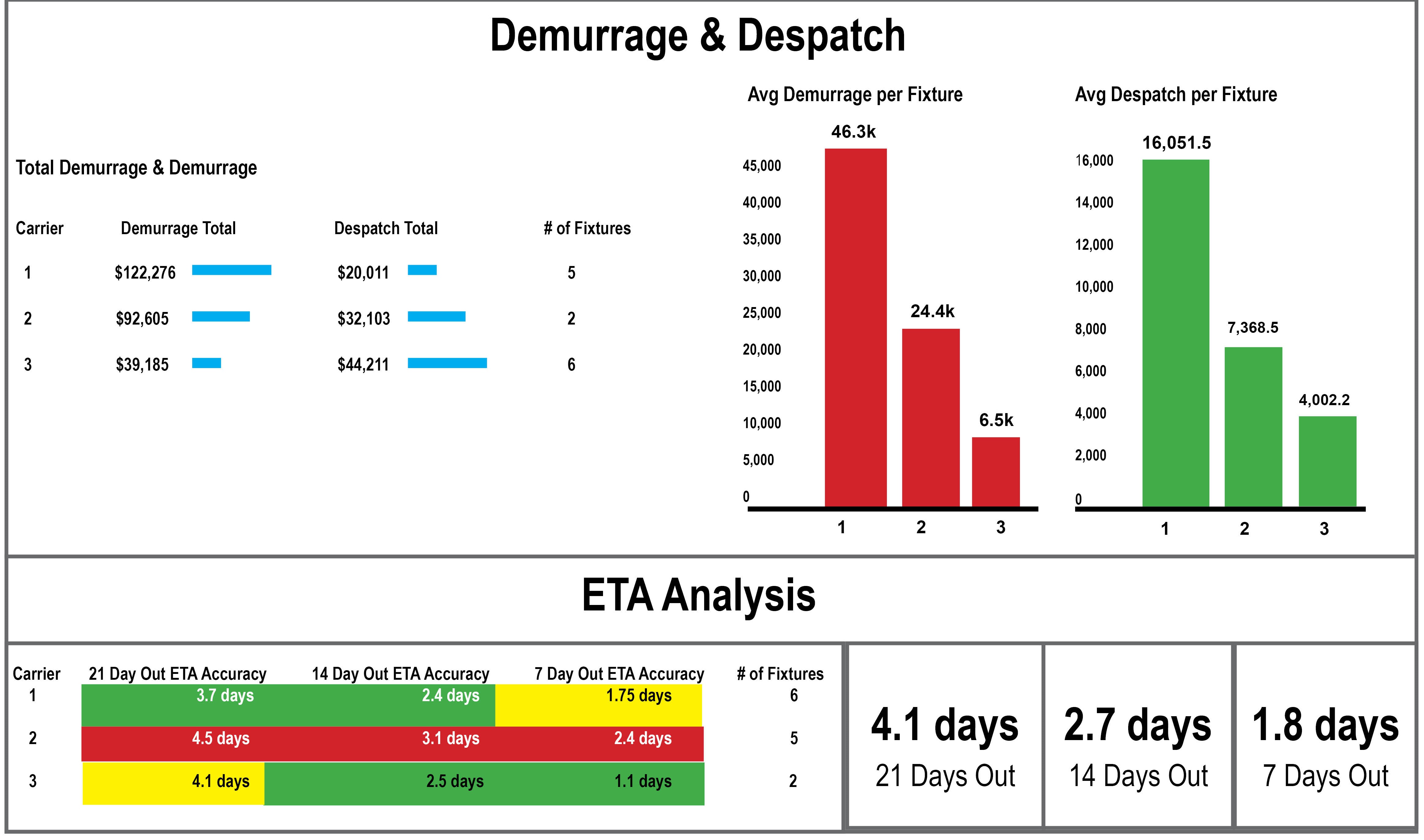Improving Business Agility through Low-Code Technology

From the pandemic to increased shipping regulations, the world of maritime bulk shipping is experiencing change faster than ever before. Bulk shippers can no longer rely on time-honored methods of thinking. The ability of shippers – or any organization - to flourish by rapidly adapting to market changes and emerging opportunities is defined as business agility, and it is what will keep companies ahead of their competitors. Low code, a visual approach to software development that enables faster delivery of applications through minimal hand-coding, is one technology that helps improve business agility.
Low code applications empower employees reporting outside of IT departments to create technology or analytics capabilities for internal or external business use. These staff members are often called business technologists. Low code allows any business technologist to rapidly design, build and deploy digital twins of the organization’s business processes. Low code eliminates the need to transfer business knowledge to software engineers to perform abstract coding. This allows the business technologist, who works with the business processes every day, to iterate and improve tools to make a team more efficient.

Some benefits of using low code applications are:
- Near-real cycle time for data analysis
- Scalable and Flexible -- low code systems will support projects not yet considered within your business
- Faster iteration cycles
- Substantial reduction in implementation time and costs
Gartner, an IT consulting/research firm, expects use of low code systems will nearly triple by 2025.
Companies not transitioning to low code for business process management run the risk of falling behind their competitors.
Some characteristics of a business-agile company that low code supports are:
Empowered teams – These are teams that have been empowered to collaborate and provide knowledge that informs company decision-making, instead of just processing information. Gartner research shows that 41% of current employees identify as business technologists within their organization. Gartner further predicts that companies successfully enabling their business technologists are 2.6 times more likely to accelerate digital business outcomes than companies that do not empower business technologists.
Rapid decision and learning cycles. Teams work to continually reduce business process cycle time and measure progress. (Business processes are any set of activities performed by more than one person collaborating to achieve a particular business goal.)
Mastering these business agility characteristics is impossible in a world of emails and spreadsheets. Tools are required to simplify the documentation, execution and revision of business processes. Low code is the enabling technology that is specifically designed to help increase business agility.

How does using a low code system improve business agility?
Low code systems can help with:
- Agile business planning processes - Organizations can adjust and deploy process change more rapidly and provide the confidence to try, fail, and try again.
- Increase team collaboration - Business process changes are more effective when all stakeholders have an opportunity to contribute. Use low code to facilitate this collaboration.
- Documentation by default – Teams can be led through process change design while automatically documenting any changes.
- Connect and visualize data - Siloed datasets that are difficult to merge or compare reduce the power of that data. Low code systems multiply that power by using it comprehensively. Create the visualizations necessary to improve understanding of where a business must go to succeed.
- Use historical data to focus on forward looking insights - Use insights to embrace change. Make rapid process improvements to keep ready for what is next.
- Automate the routine -- Free up team members to dig deeper and provide knowledge instead of just collating data from emails and spreadsheets.
Five things to look for in a low code application:
Harnessing the power of low-code technologies starts with going beyond the hype and marketing of a vendors’ low-code versus no-code claims. There is a difference between these approaches which comes down to the extensibility of the platforms. There are also myriad product segments in the overall low-code development space.
All low code applications are not built the same. Here are some things to look for in this type of system:
- Evaluate systems which are tailored to your industry. Minimize the upfront work necessary with systems that understand your business. Configuring a plain vanilla system to support processes that are unique to the bulk shipping industry can be time consuming and may not grow to meet the unique needs of maritime shipping.
- Pick an application that can support your company with a team of experts. In order to be agile, your citizen developers must have a conduit to rapidly learn techniques and suggest improvements that will make the system run its best.
- Become aware of all security requirements required by your IT department . Work with an application that understands the unique challenges of your industry and how to navigate through any IT security evaluation successfully.
- Ensure the application can start small and grow with you. The definition of business agility is to continually change with an eye towards staying ahead of the competition. Make sure the low code application you select is flexible enough to keep up with your agility.
- Confirm seamless data flows capability. Quick access to centralized data is a key to business agility. Look for a system with an easy way to make this happen and the experience with systems similar to yours.
Five steps to prepare for a low code system deployment
- Begin with an inclusive business strategy. Ensure it considers durability, reusability, scalability and agility.
- Be prepared to change some long-standing perspectives. Empowering business teams to build their own solutions is a new concept in many businesses. IT leaders will no longer be responsible for translating the business requirements into a system that your team uses. Their time will be consumed in managing what tools are being used and how they will impact the system infrastructure and data security. The IT department will be more involved at the front end of any low code system evaluation. They are interested in keeping the company's IT tool portfolio manageable with little or no redundancy. It is their responsibility to explore how business agility objectives could be met with your existing application portfolio. Be aware that cobbling together existing applications to meet the objective of improving business agility is typically suboptimal. If the objective is to constantly adapt and improve, it is unlikely that a grouping of legacy systems can meet company objectives.
- Low code is not a panacea for improving the time to value. For any process change, planning, change management and training are still required. One technique used by successful companies is to deploy less than perfect processes and iterate them continuously with an eye on improvement.
- Your business technologists must be trained. Some foundational development philosophy such as consistency, reuse, and the building of intuitive processes is required. This will improve time to acceptance and successful adoption. Think of the police sketch artist. He doesn’t draw a perfect rendition of the suspect immediately; he collaborates with the witness(es). He helps his collaborators recall details incrementally. Proficient sketch artists use a lot of erasers while citizen developers use a lot of process iterations.
- Collaborate outside of your organization. Find someone who has experience in the journey to business agility. Outside collaboration will bring in new ideas and perspectives. Launch ahead of your competition.
Low code is here. It is accepted. One day you will find that all of your competitors have adopted a low code solution to help them become more agile. Getting there first provides your company with the optimal competitive advantage.
About the Author

Bob Kessler is manager of customer success and has worked with companies to digitize and improve business processes from digitizing shipboard procurement processes to improving visibility on offshore oil platforms. Voyager Portal is designed specifically to improve bulk marine shipping processes through collaboration, data consolidation, and visibility.
